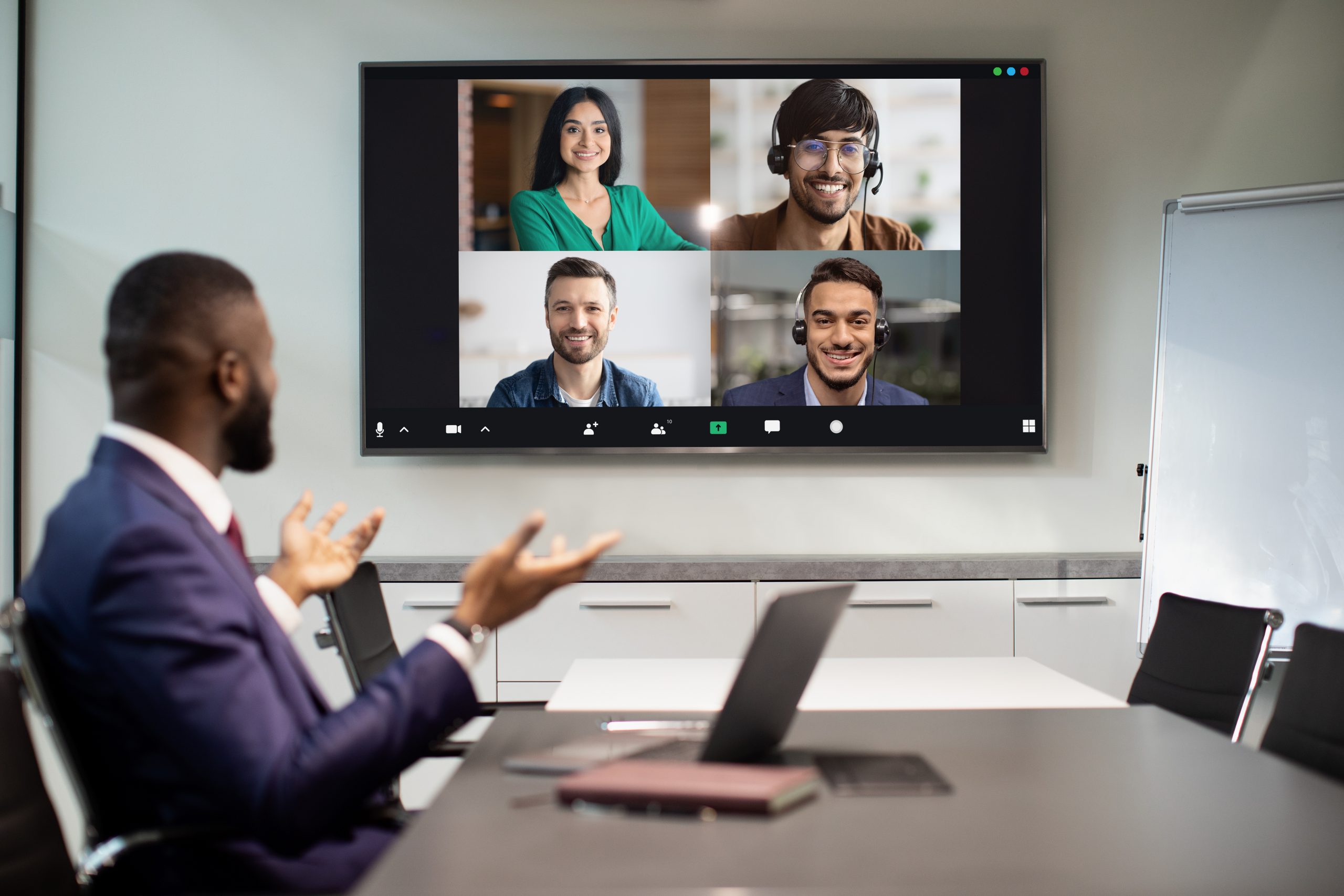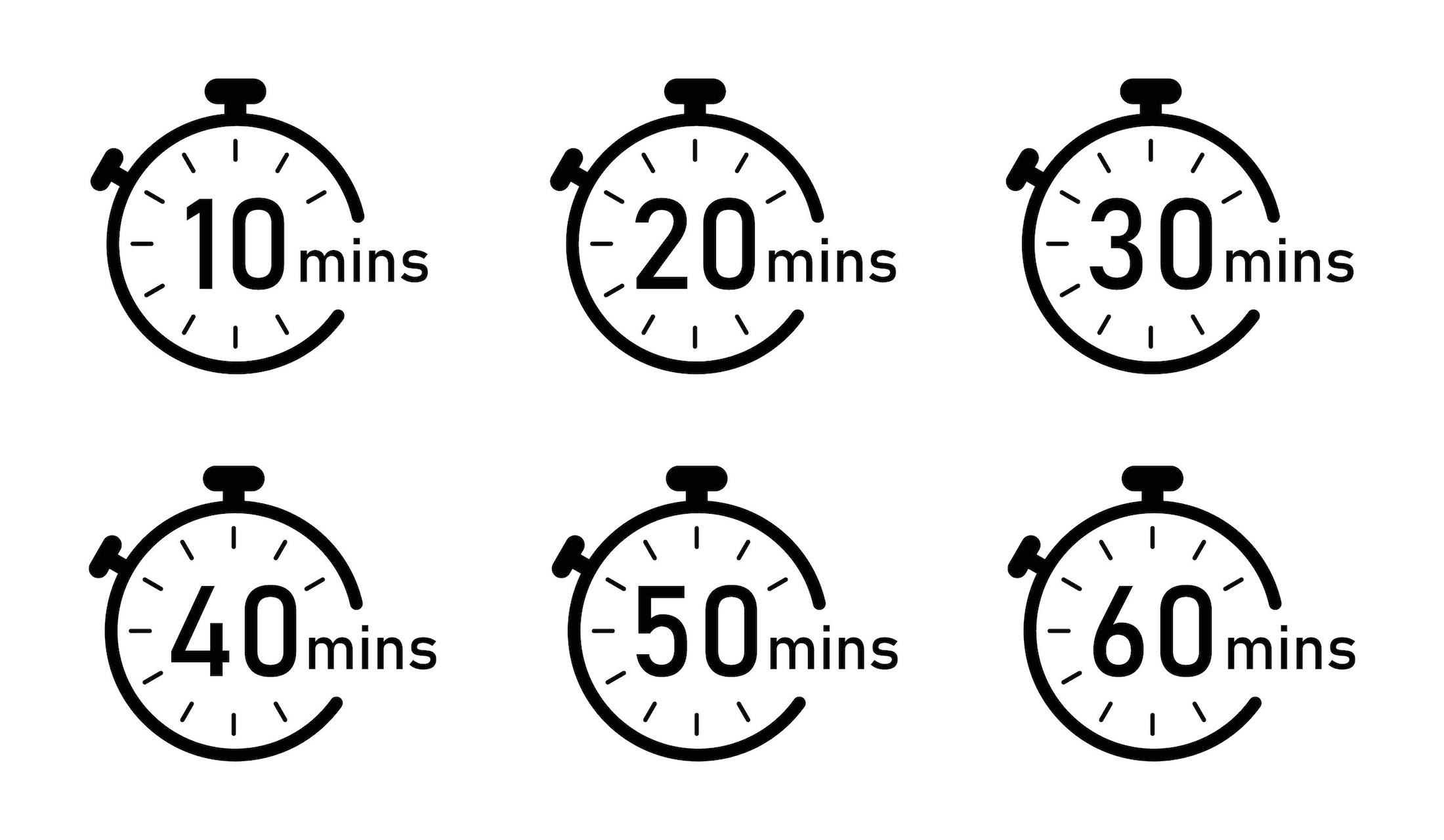As ‘shelter-in-place’ directives spread around the globe, business meetings must still carry on – from home. Here’s a practical guide to help you deliver high-impact presentations via video-conference.
If you’re accustomed to going to the office every day to run your business, you’re about to face the challenge of leading meetings, or pitching new business, via video- conferencing from home.
Online interpersonal communications – whether for internal or external audiences – is an entirely new way of working. The survival of your business could depend on how successful you are at transitioning from face-to-face to virtual meetings.
My professional background can help shed light on some best practices to ensure high-impact delivery face to camera: I was a business & financial TV anchorman for nearly a decade, before launching my corporate communications agency.
At the end of the day, hosting a video-conference is alot like anchoring your own TV show. Let’s take a look at what TV teaches us about video conferencing.
Lights, Camera, Action
First and foremost — as basic as this may sound — make sure you’re properly lit and sitting square in the picture. I’m dumbfounded by the number of presenters I’ve seen who are completely off-center in their video feed, almost off camera, sometimes even with back lighting from a nearby window that plunges their face into shadow… While you may not yourself be a professional TV technician, try to ensure that you are at least properly centered in the picture, in front of a neutral backdrop. Also, speak close enough to the microphone in order to reduce the natural reverb in the room, and make sure your face is zoomed in close enough so that the audience can read your facial expressions, which is key to sustaining their engagement over the course of your presentation.
Voice placement
Your voice – tone and vocal variety — is important to create audience engagement. Monotone is deadly. Remember to change pace and energy levels regularly throughout the presentation, so that audiences can feel when you are excited about a particular section. If you are excited about delivering your own presentation, it will come across in your voice, and that positive energy will radiate contagiously into your audience. Emphasize key words every so often (but not too often, or it will feel staged.) Conversely, use pauses for effect, to add gravitas as you let an idea hang in the air for moment, thus making it stand out in the course of the presentation. (Warning: this is a pro tip — it’s actually very hard to use silences for effect when you are not already extremely comfortable as a presenter, like say President Barack Obama, who used this rhetorical device frequently.)
Lastly, adopting a conversational tone is most likely to help you sustain maximum audience engagement: using the vocal ‘register’ of a conversation makes you sound like you’re talking with your audience, not at them. Always remember that emotion and engagement come from the heart – sincerity can never be successfully faked — audiences will see right through you. Your best platform for audience engagement is to speak about thing that you truly believe.
Engagement
Another way to maximize audience engagement is to invite questions throughout the presentation, rather than pushing the Q&A section to the end. Question time creates variety, while also generating natural breaks to restate your key messages, to make them stick. Today, current video conferencing technology is your ally, thanks to widespread ‘chat’ functions, which empower viewers to share comments and questions in real-time throughout the presentation – therefore, always keep an eye on the live chat feed, to rebound on the most relevant questions as they occur. (Conversely, I recommend that you conveniently ‘overlook’ any questions that could derail your presentation, no one can blame you for not addressing each and every question.)
A final caveat for successful video conferencing is knowing that attention spans are much shorter online than in face-to-face meetings. If you are hosting say a webinar for example, you must overcome yet another handicap: your audience sees you, but you may not see them. It’s difficult to gauge their level of interest and attention, to course-correct the presentation as needed, in real-time. To sustaining audience engagement, show your face as often as possible, and your PowerPoint as little as needed.
Market research has shown that few things are as compelling to humans than another human face. The higher your visibility, the higher your audience engagement. Not appearing enough on-camera could work against you. And as I’ve mentioned in previous posts, your body language (including your facial expressions) accounts for more than half of what people take away from your presentation; your words, only 7%.
Body Language
Body language is key. Random or unchecked movement — such as fidgeting — works against you, detracting from your presentation. Take an athlete’s approach to managing your body language: be relaxed, poised, graceful, full of understated power, deploying motion in a controlled and purposeful way.
The concept of controlled and purposeful movement also applies to your use of visual aids, such as PowerPoint slides, to illustrate your point. Like I always say: “Make your point, not your PowerPoint.” Many presenters make the mistake of reading their slides out loud, which is very unengaging, as the audience can read slide content up to 7 times faster than you can utter the words. Never think of your slides as speaking notes, but rather as the visual proof point that illustrates what you’re saying.
Be like the Weather Guy
For example, think of yourself as a TV Weather Guy, guiding his audience’s attention to the infographic of the rainfall (or sunshine) while he utters the forecast. Likewise, during your presentation, call your audience’s attention to your visual aid while illustrating your point, then let them take it in (pause), and then remove the visual when it is no longer needed — rather than let it hang there after you’ve moved on. Carefully managing the transitions to, and away from, your visual aids is the only way to ensure that audience focus stays on you when it needs to. Own the stage.
Devices
Consider the devices your audience may be using to watch your presentation — think about your own frustrating experience watching feature films on tiny airplane TV screens. Adapt your PowerPoint slides accordingly: visuals should be uncluttered enough to remain legible on all sizes of screens, from laptop to iPad to smartphone. Use visuals that are simple, crisp and easy to read: catchy titles, few words, self- explanatory graphics.
Use a script
Using a written script is a great way to stay on message throughout your presentation, while also managing time constraints. In order to stay within your allotted time limit, calculate your written speech length by dividing your total word count by the standard speech delivery pace of 130 words per minute.
For maximum effect, you may also consider using a TelePrompTer — no one in your video-conference audience will be the wiser for it. Today there are many apps, independent of your video conferencing platform, that will enable you to scroll through your text while facing the camera: as you read your script with proper poise, pitch and pace (the 3 P’s of vocal power), you’ll appear fully engaged with your audience. Again, think here of President Obama, who was like a Zen master of the teleprompter, using it for control, impact and word-perfect emphasis.
Click here to see all Adrian Dearnell’s Forbes contributions





